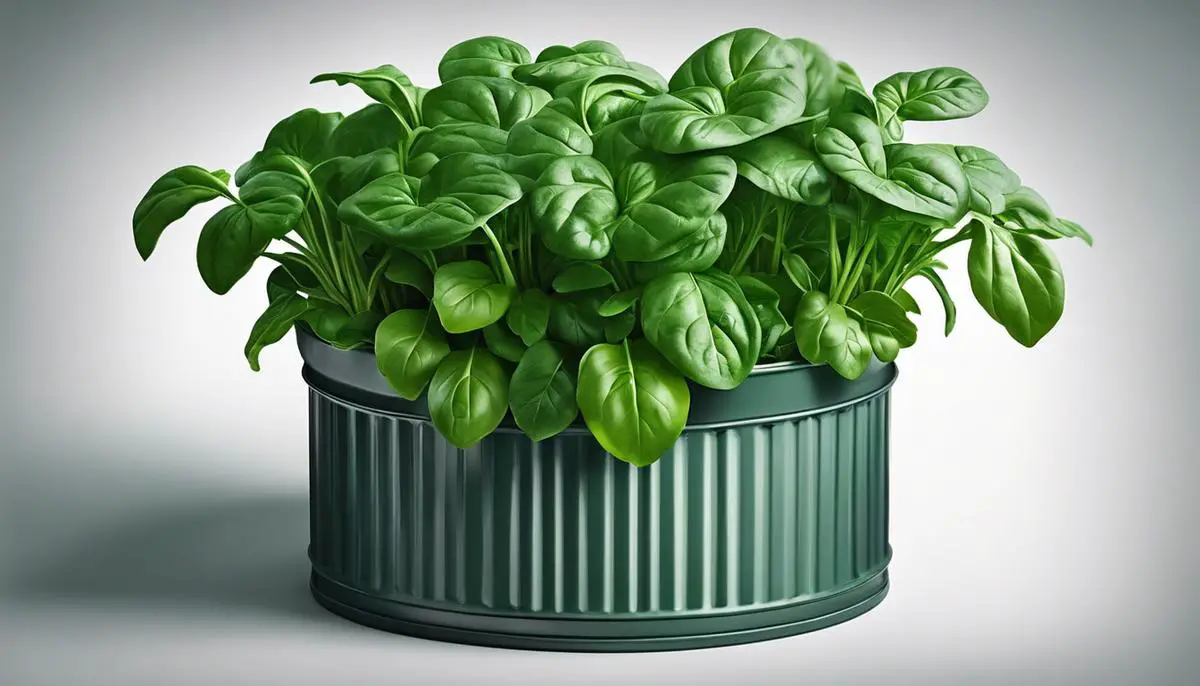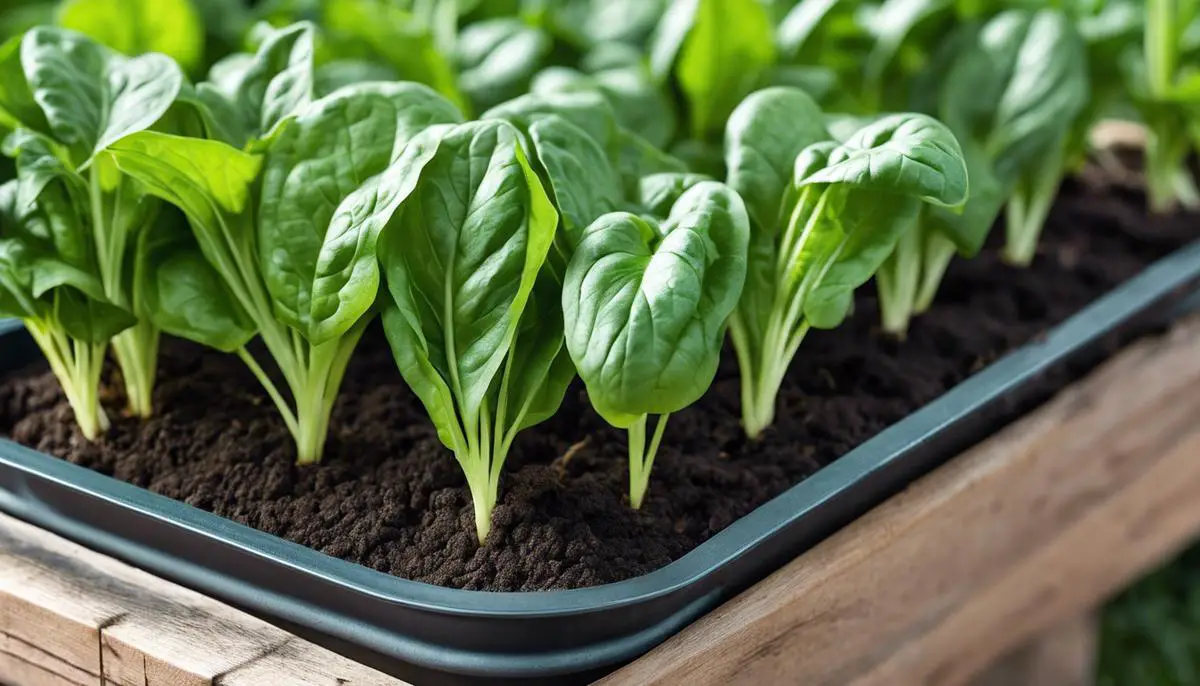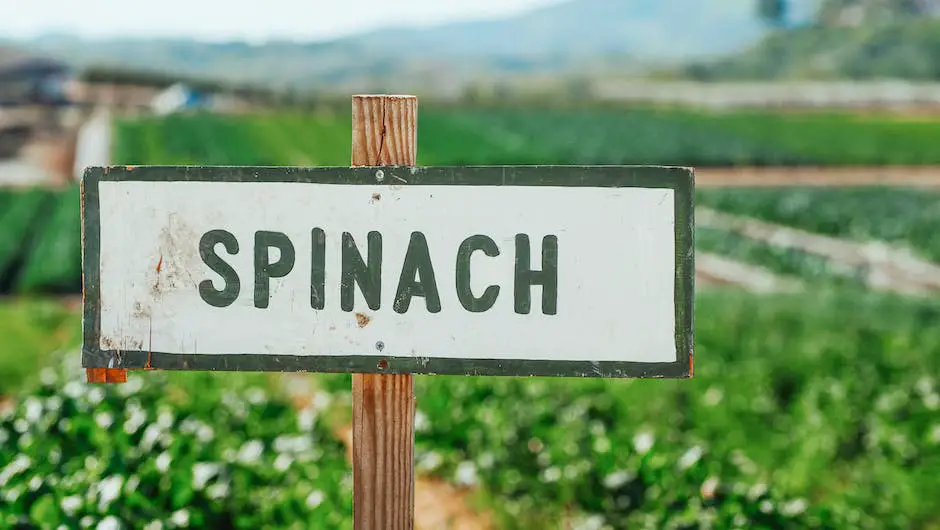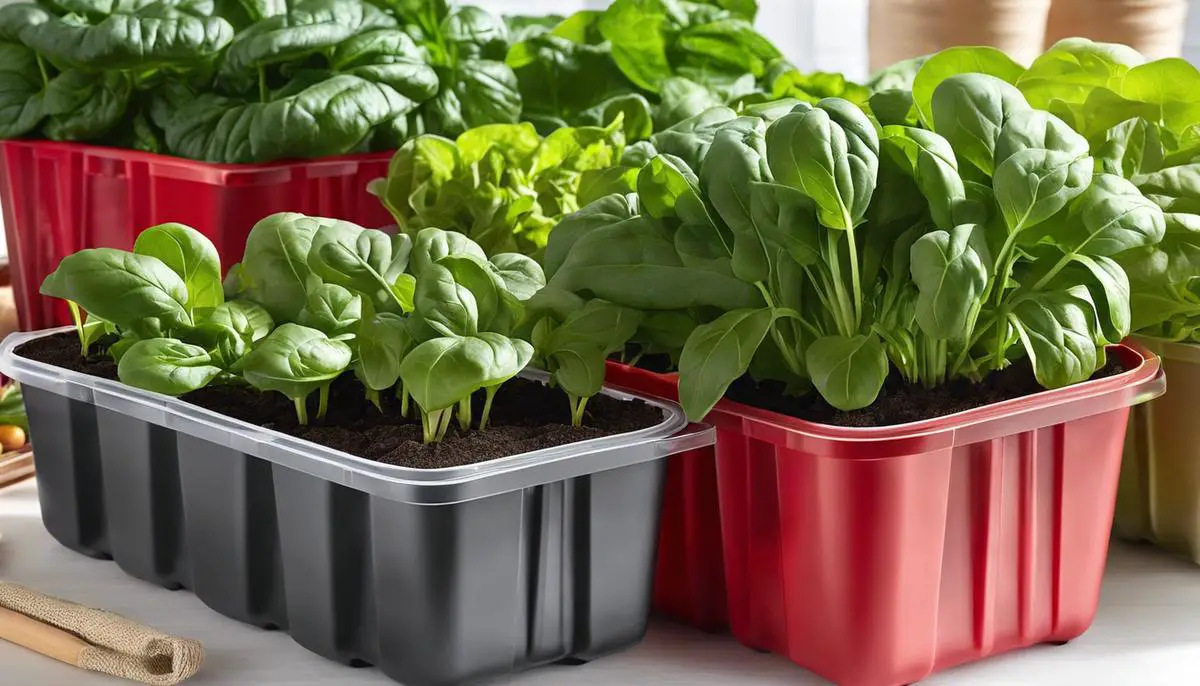Embarking on a container spinach gardening journey offers an enjoyable and rewarding experience, providing not just a green touch to your surroundings, but also a continuous supply of nutritional bounty. Understanding the key aspects such as selecting suitable containers, preparing fertile soil, providing proper spinach plant care, and implementing efficient harvesting techniques, are notable pillars that can significantly influence the success of one’s spinach gardening venture. By adhering to these elements, one can optimize the health of spinach plants, leading to flourishing yields with extended freshness. Let’s delve into these vital topics and learn the best practices of container spinach gardening.
Choosing the Right Containers
Unlocking the Secret to Perfect Spinach: Choosing the Right Container
For every green-thumb enthusiast who dreams of lush, leafy gardens, cultivating spinach holds a charming appeal. A versatile superfood that’s packed with valuable nutrients, spinach is a worthy addition to any home garden. But before you dive into this rewarding hobby, there’s a key decision to make. Selecting the perfect container for the job can make or break your spinach growing game.
Reader Poll: What online courses would interest you?
Size Does Matter!
Spinach, to contrary belief, doesn’t require a deep home; instead, it focuses its growing energy on expanding outwards. A growing trough or container that is 6-8 inches deep is more than enough for our green friends. But, remember, their fondness for spreading out warrants a wider space. Aim for a container that’s at least 12 inches in width to accommodate a few thriving spinach plants.
Material Matters
The container’s material is an essential factor that often doesn’t get the attention it deserves. Ceramic or terracotta pots may be enchanting to look at, but they do lose moisture quickly, leading to parched spinach plants. On the other hand, plastic and resin containers ensure that moisture retention is optimal, thereby fostering an environment conducive to spinach growth. And should you choose a wooden barrel, ensure it hasn’t previously stored harmful substances and is not prone to rotting.
Drainage is Key
Spinach finds overly soggy environments absolutely repelling! Proper drainage is crucial to prevent water logged roots and the risk of rot setting in. A container with adequate drainage holes at the bottom will ensure that excess water readily finds an exit, leaving suitable moisture content in the soil.
Subscribe to our newsletter!
Location, Location, Location
Your spinach container’s home greatly impacts its growth. Spinach enjoys full sun or partial shade. But, should your location be susceptible to hot summer days, it might be wise to consider a container that can be moved. In this case, lightweight materials or pots with casters would be a smart choice.
Color Counts
A black or dark-colored container could end up baking your spinach plants in hotter climates by absorbing more solar heat, while lighter hued pots reflect the heat and keep the soil temperature steadier.
In this gardening journey, patience, love, and a well-chosen container are pivotal. With a keen eye on the container’s size, material, drainage, location, and color, you’ll soon possess all the keys to a flourishing garden of spinach. Not only will this hobby boost your spirits, but the green, leafy bounty of your work will surely boost your health too. So, brace yourself – a container full of sprightly spinach is only a fellow garden-lover’s secret away. Bountiful harvests await!

Preparing Your Soil
Perfecting Your Spinach Soil: The Container Gardener’s Guide
Who knew that a bunch of green leafy vegetables could leave us in such awe and admiration? That’s spinach for you – one of the most versatile, inexpensive, and nutritious vegetables that can be grown almost anywhere. But today, we’re zeroing in on those green thumbs who relish the challenges and rewards of container gardening. Building on from our previous article on container selection, let’s deep-dive into the secret to flourishing spinach, the soil.
From experience, it’s no secret that spinach thrives in a well-draining, fertile soil. Achieving this balance isn’t a tall order, but it does demand understanding. For a start, a mix of organic matter, sand, and regular potting soil creates a pretty good soil mixture for your spinach. This concoction ensures both essential nutrients and the facilitating of proper root ventilation and water flow; all critical for your spinach’s growth.
The kingpin here is surely compost or well-rotted manure. Stitching in a bit of organic matter to the soil mix delivers a steady supply of nutrients to the plant. And don’t worry about over-fertilizing. Feedback from our gardeners has time and again shown that spinach isn’t demanding when it comes to supplementary feeding.
It’s important to remember that spinach prefers a neutral to slightly alkaline pH. Aim for a soil pH between 6.5 and 7.5 to help your spinach flourish. You can test your soil pH with a simple testing kit from local garden centers. If your soil’s pH doesn’t match, worry not! Adding dolomitic lime can help raise the pH, while incorporating elemental sulfur will lower it.
One common mistake our gardening community has noted is packing the soil too tightly in the container. Avoid compaction. Spinach roots need room to breathe and grow. Layer your soil, but don’t press down hard. Loose soil not only promotes root penetration but also ensures adequate moisture retention, something your spinach would love!
Lasty, be vigilant against possible pests and diseases. Sterilize your soil before planting if you are recycling it from a previous planting. Heat it in the oven at 180℉ for about 30 minutes or use a commercial soil sterilizer. This eliminates any harmful organisms and ensures a healthy start for your spinach.
Growing spinach in containers isn’t rocket science, but rather a labor of love. The ideal soil mix, the right pH, the avoidance of compacted soil, and sterilization are all essential steps toward a bountiful spinach harvest. And remember, while spinach may love the sun, it also appreciates a bit of shade during hotter months, and overly-saturated soil can be a root rot waiting to happen.
Happy gardening container gardeners! Happy spinach-growing season!

Photo by helloimnik on Unsplash
Spinach Plant Care
After securing the right container and preparing the perfect soil, the next crucial element to consider for growing spinach in containers is the aspect of watering.
This nutrient-rich leafy green, like many plants, thrives best when it’s watered appropriately. You’ll want to water your spinach plant until you see water draining out from the bottom of the container. On average watering is needed when the top 1 inch of soil appears dry; however, remember to always avoid overwatering as it can lead to root rot, which is detrimental for your plant.
Temperature is another vital factor to monitor closely. Spinach plants generally appreciate cooler weather. They can survive frosts and even grow in temperatures as low as 20°F. As spinach plants are sensitive to heat, when the temperature starts hitting the 70°F mark, your plants may start to bolt, meaning they prematurely go to seed and, consequently, the leaves become bitter. So, if you live in an area with hotter climates, you may want to consider sowing the spinach seeds in late summer for a fall harvest.
Monitoring pests is a practice that should always be in your gardening routine. While growing spinach in containers tends to keep most pests away, occasionally, leaf miners, aphids, or slugs can still find their way. Natural solutions like introducing beneficial insects or using organic sprays can be effective ways to ward off these potential threats.
As far as feeding your spinach plants go, they will thank you for a balanced liquid organic fertilizer every couple of weeks. However, refrain from using an overly nitrogen-based fertilizer, as this can lead to lush leaves but poor root development.
Remember, spinach plants in containers have a rapid growth rate. You can generally start harvesting the outer leaves within 4-6 weeks after sowing. To keep your plant producing, cut or pinch off the outer leaves and allow the center to continue growing. This practice also encourages bushier plants.
Last but not least, always keep an eye out for the signs of a happy, healthy spinach plant. That includes dark green foliage, robust growth and no signs of wilting, yellowing or disease; that’s when you know your efforts are paying off.
When it comes to growing spinach in containers, there really is no one-size-fits-all method. It’s a journey where you learn from each planting session, adjust your tactics and try again. As long as you provide an environment conducive to growth and monitor your plants regularly, there’s no reason why you can’t be enjoying fresh, home-grown spinach in just a few weeks.

Harvesting Your Spinach
When it’s time to harvest spinach, timing is a key factor. Generally, spinach is ready for harvesting as soon as it has formed enough mature leaves. Depending on the variety, this could be anywhere from 37 to 45 days after planting if it’s a spring crop, or 40-45 days if it’s a fall crop.
Harvesting spinach at the right time ensures the leaves taste sweet and tender. Waiting too long may yield bitter, tough leaves. So when is the perfect time? When the spinach leaves reach about four to six inches in length, they are usually at their prime.
Harvesting is not rocket science but careful execution seals the deal. To harvest, use a sharp, clean pair of gardening shears or scissors. Cut the plants back to about an inch above the soil surface, being careful not to disturb the roots. This way, the spinach plant will produce a new flush of tender leaves. It’s also possible to simply pluck off the leaves by hand. Start from the outside, picking the oldest, largest leaves first and allowing the inner, younger leaves to continue growing for a later harvest.
Drum roll for the spin witches and wizards! The beauty of spinach is that it features a cut-and-come-again trait, meaning it continues to grow and produce new leaves after the mature ones have been harvested. This allows for continuous harvesting through the season. Nevertheless, ensure the spinach plants are not being stripped bare with each harvest; leave enough leaves to enable photosynthesis and subsequent growth.
It’s crucial to clean the harvested spinach properly as spinach tends to collect a considerable amount of grit. Rinse the leaves under running water right after the harvest, shake off excess water, and pat dry. To store, wrap the leaves in paper towels and place them in a plastic bag in the refrigerator, where they can stay fresh for about one week.
One last point to remember: spinach is sensitive to heat and might bolt, that is, flower prematurely, if exposed to temperatures above 75-80 degrees Fahrenheit. If a heat wave is coming or if the plants show signs of bolting (such as the formation of a tall, thick stem), it’s better to harvest all remaining leaves immediately as the taste typically deteriorates after bolting.
In a nutshell, harvesting spinach hinges on recognizing when the leaves are mature, knowing how to cut or pluck, and understanding the plant’s life cycle. With time and patience, spinach harvesting unfolds as a rewarding and successful part of container gardening. Happy harvesting!

Mastering the art of container spinach gardening is not an overnight process, but rather a journey of consistent learning and experimentation. By making informed decisions about container choice, giving meticulous attention to the soil’s condition, caring for the spinach plant properly, and understanding the right time to harvest, one can truly make the most of this engagement, welcoming abundant and nourishing harvests. Remember, every little effort you put into your spinach garden not only contributes to the plant’s growth but also enhances your own understanding and connection with nature. Keep refining your skills, and you’ll surely relish the rewarding experience of a thriving homegrown spinach garden.

